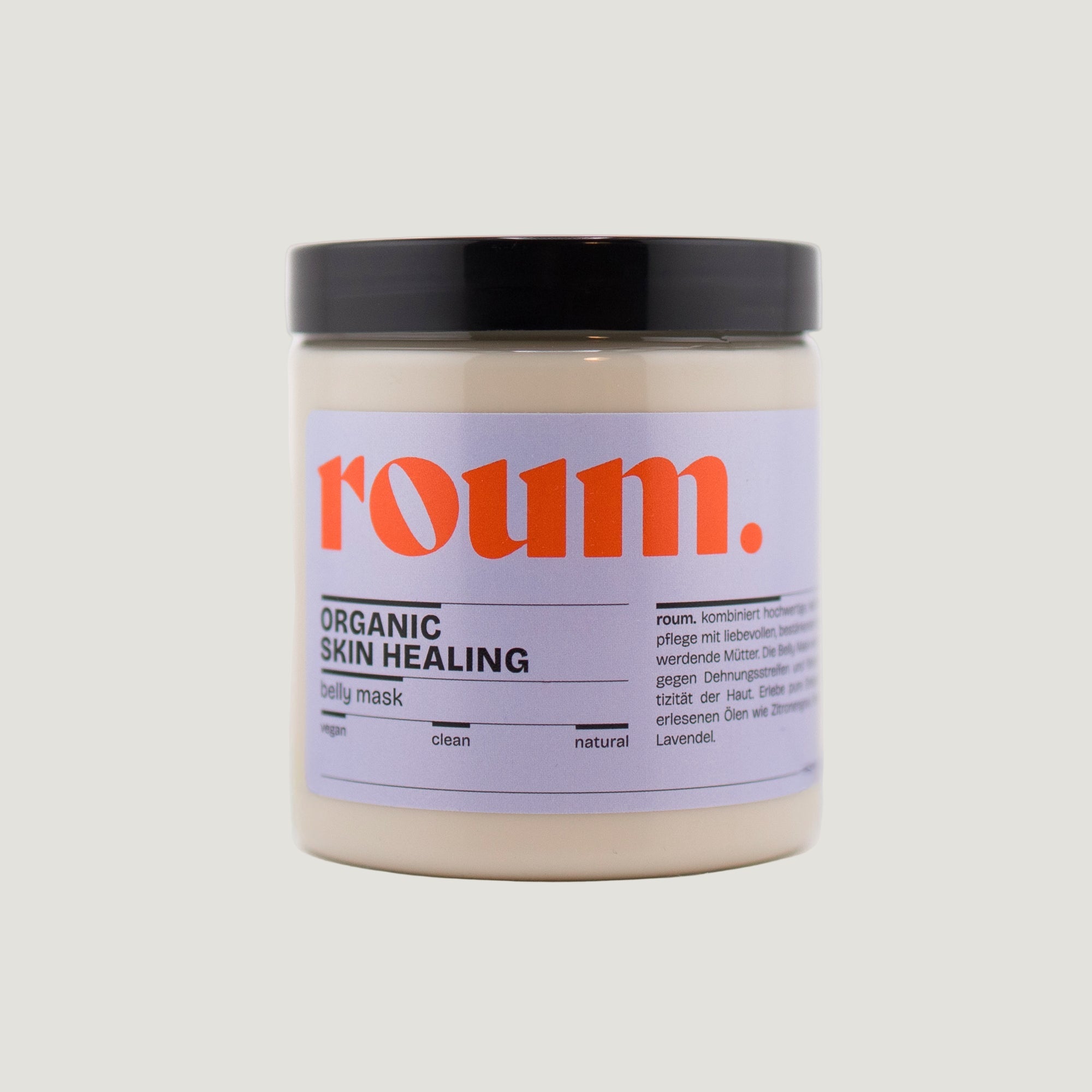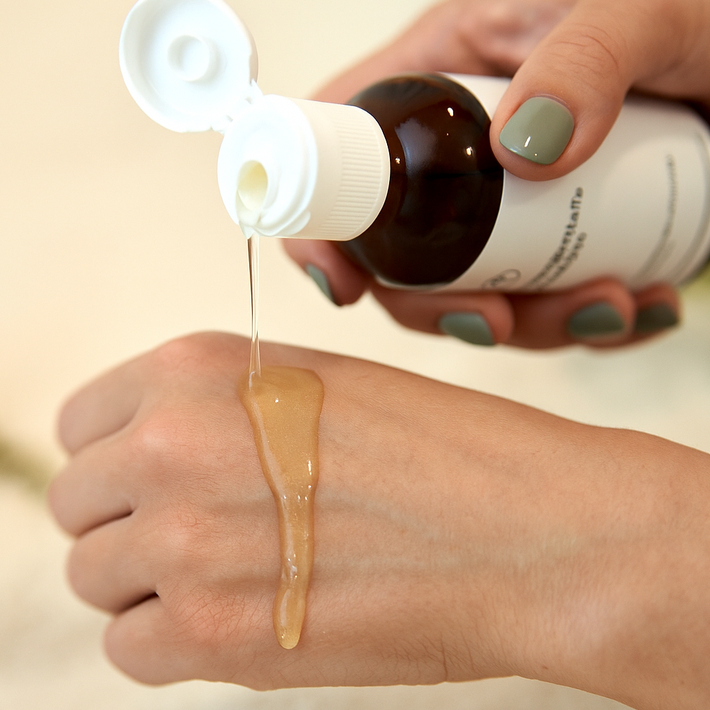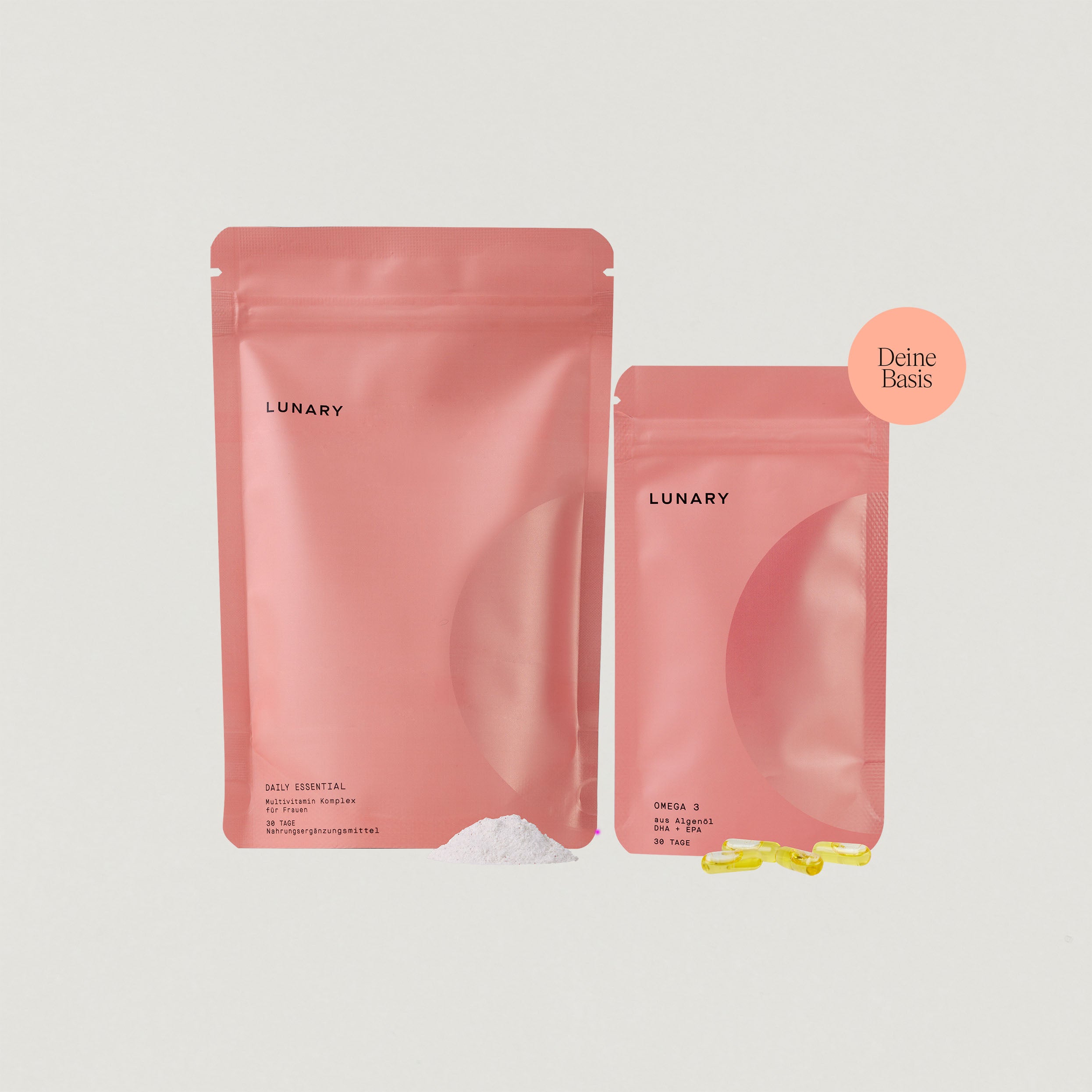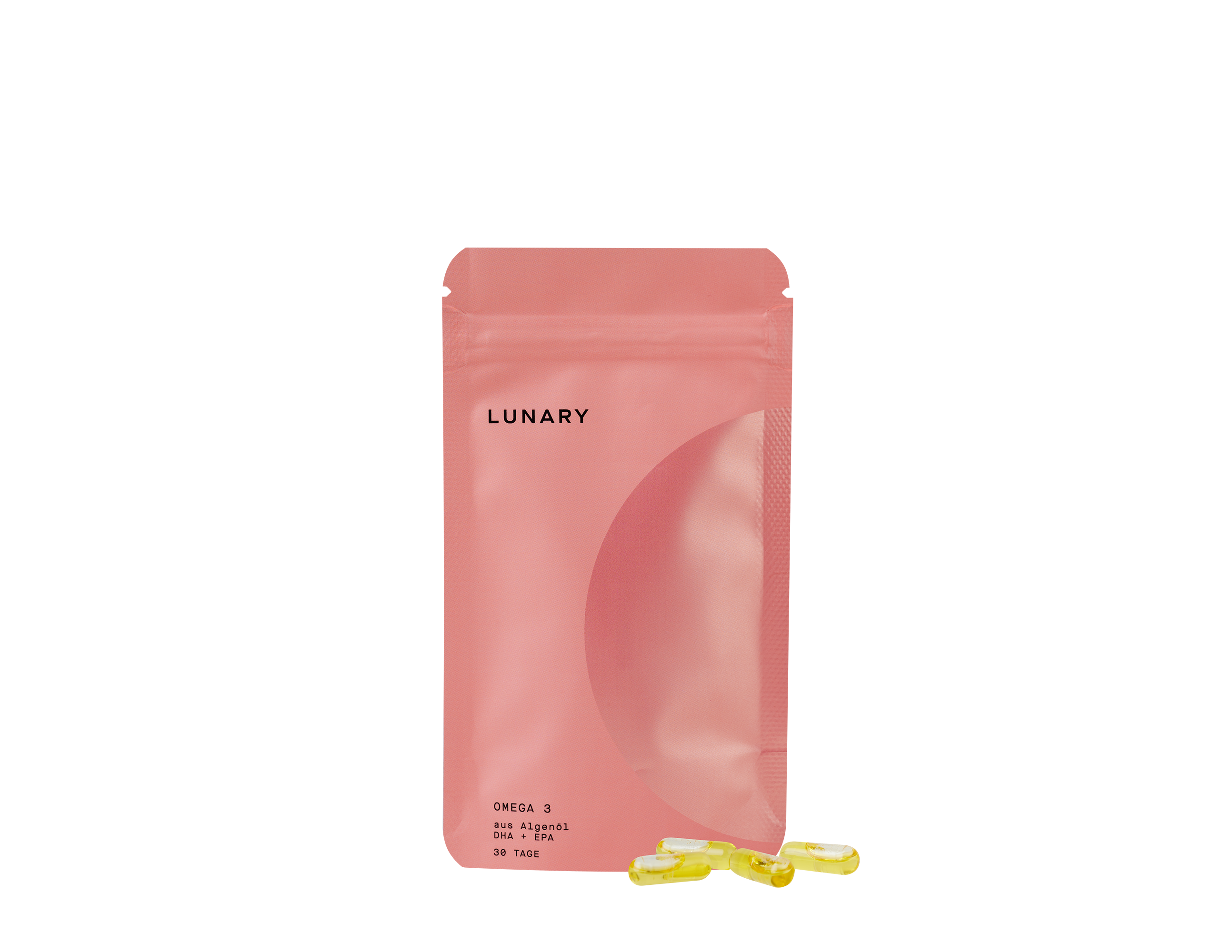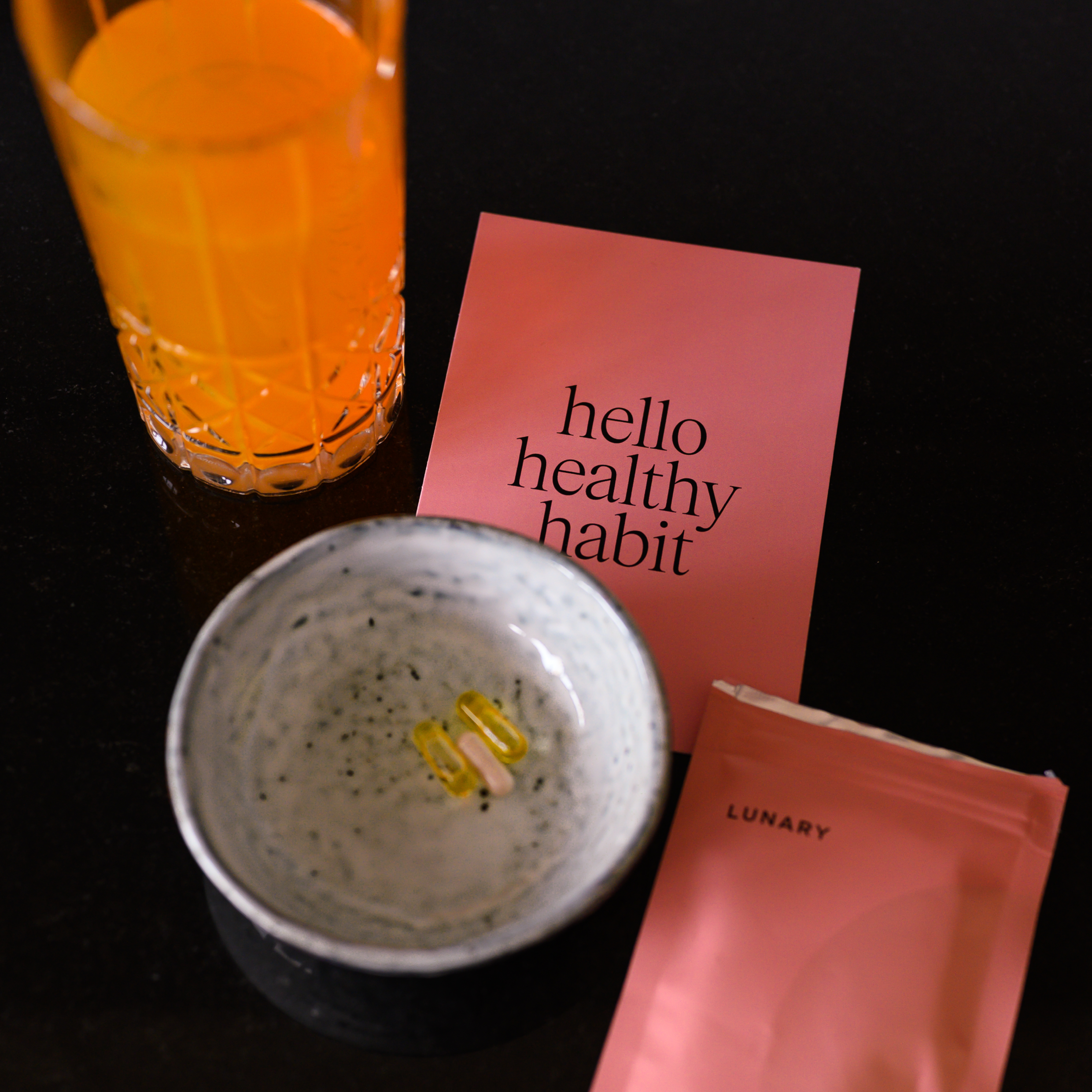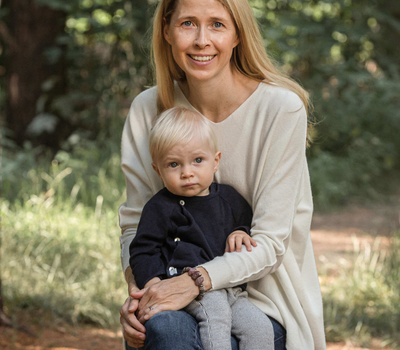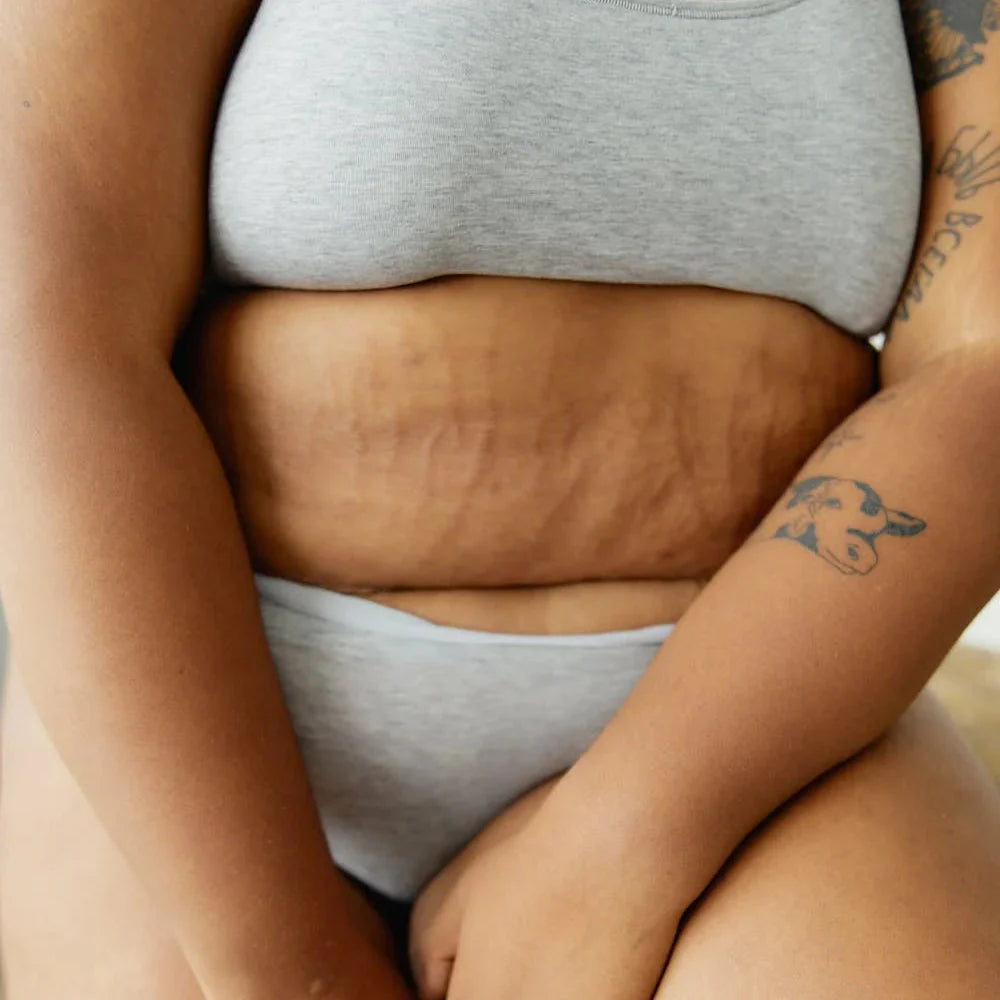Pregnancy changes your body – and that’s a beautiful thing.
But many women ask us: What really helps against stretch marks?
Here you’ll learn why they appear, how you can prepare your skin, and which natural care truly supports it.
What are stretch marks and why do they appear?
Stretch marks – medically known as striae gravidarum – are fine, linear tears in the middle layer of the skin (the dermis).
They occur when the skin has to stretch faster than its elastic fibers can keep up. During pregnancy, the belly often grows significantly within just a few weeks, putting great strain on the connective tissue.
This stretching causes the collagen and elastin fibers in the skin to tear. On the surface, reddish-violet lines appear at first, which gradually fade and take on a silvery shimmer over time.
Hormones also play an important role: the pregnancy hormone cortisol in particular reduces the elasticity of connective tissue. This makes the skin softer – which helps during childbirth but also makes it more prone to tears.
During pregnancy, the skin becomes more sensitive overall as its structure changes: it retains more water, is more richly supplied with blood, and reacts more sensitively to tension, friction, or dryness.
All of this makes it more delicate – especially in areas where the tissue stretches the most, such as the belly, breasts, hips, and thighs.
Does every pregnant woman get stretch marks?
Not every pregnant woman gets stretch marks – but many do.
It’s estimated that around 60 to 90 percent of all expectant mothers experience them.
Whether they appear or not largely depends on your genetic predisposition and the strength of your connective tissue.
So if your mother or sister developed stretch marks during pregnancy, it’s more likely that your skin may too.
Other factors also play a role:
- Weight gain: Rapid or significant growth of the belly or breasts puts extra strain on the skin.
- Skin type:Dry skin tends to be less elastic and therefore more prone to small tears.
- Hormones: They influence the elasticity and resilience of connective tissue.
The most important thing to remember: stretch marks are not a sign of poor care or neglect.
Even the best cream can’t completely counteract a genetic tendency toward weaker connective tissue.
Regular care helps make the skin more elastic, nourished, and resilient – but it can’t offer an absolute guarantee.
Even the best cream can’t completely counteract a genetic tendency toward weaker connective tissue.
Regular care helps make the skin more elastic, nourished, and resilient – but it can’t offer an absolute guarantee.
That's why:
Be gentle with yourself and your body. Stretch marks are not a flaw, but a natural part of the beautiful changes your body goes through during this special time.
Marina S.
Getting your skin ready for pregnancy
The earlier you start caring for your skin, the better your body can adapt to the beautiful changes ahead.
Even from the first trimester, it’s worth giving your skin a little daily attention – with gentle, natural routines that nurture both you and your baby.
1. Daily Massage & Care
Massage your belly, breasts, hips, and thighs regularly with a high-quality oil or rich cream.
A gentle pinching or circular massage stimulates blood flow, promotes elastin production, and helps your skin stretch more easily.
Natural ingredients such as almond oil, jojoba oil, shea butter, wheat germ oil, or vitamin E are especially soothing – they deeply moisturize the skin and keep it soft and supple.
2. Nutrition & Hydration
You can also support your skin from within. A vitamin- and mineral-rich diet strengthens connective tissue and maintains skin elasticity.
Make sure to include enough protein, zinc, vitamin C, and silica to promote collagen production.
And don’t forget to drink plenty of water to keep your skin hydrated and healthy.
3. Movement & Circulation
Regular, moderate exercise – such as walking, yoga, or swimming – keeps your circulation active and improves blood flow, including to the skin.
This ensures your skin receives more oxygen and nutrients, making it more resilient and glowing.
Our most-loved ingredients for soft, elastic skin
When it comes to nourished, elastic skin during pregnancy, we rely on natural ingredients that truly work – gentle, safe, and full of nurturing power.
Almond oil
A true classic in pregnancy care.
Almond oil is especially gentle, absorbs quickly, and provides the skin with deep hydration.
It strengthens the skin’s natural barrier and leaves it soft and supple – perfect for your daily belly massage.
Jojoba oil
This liquid wax is very similar in composition to our skin’s natural sebum.
It helps the skin retain moisture beautifully without feeling oily.
Jojoba oil nourishes, soothes, and supports the skin’s elasticity – even during periods of rapid growth.
Shea Butter
Rich, creamy, and full of vitamins: shea butter protects the skin from dryness and supports its natural regeneration.
It forms a soft, protective layer on the skin and provides long-lasting nourishment – especially for areas under strain, such as the belly and hips.
Vitamin E & Wheat Germ Oil
Both are true power ingredients when it comes to skin elasticity.
Vitamin E has antioxidant properties, protects against free radicals, and helps the skin retain moisture.
Wheat germ oil provides valuable fatty acids and stimulates cell renewal – for stronger, more resilient skin.
Turn your skincare routine into a little ritual – a moment of calm, deep breathing, and gentle touch.
Because care doesn’t only work on the outside – it also nurtures you emotionally.
Is it really possible to prevent stretch marks?
The honest answer is: not entirely.
Even with the best care, it’s not always possible to completely prevent stretch marks – much depends on your individual predisposition and connective tissue.
What you can influence is your skin’s elasticity and resilience.
Regular care, gentle massages, and small rituals help improve your skin’s appearance, making stretch marks softer, lighter, and less visible over time.
But more important than any cream is your attitude toward your body.
Stretch marks are not a flaw – they’re a sign of change, of strength, of growth. They tell your story as a mother.
Self-care doesn’t just mean taking care of your skin – it means being kind to yourself.
Each time you apply your cream, take that moment consciously: as a small gesture of gratitude toward your body, which is doing something truly incredible.
What can you do once stretch marks appear?
If stretch marks appear after giving birth, that’s completely normal – and nothing to worry about.
Your body has accomplished something extraordinary, and now your skin simply needs time to recover.
Skin regeneration after birth
In the first few months postpartum, the skin begins to renew itself naturally.
The reddish-violet lines gradually fade, becoming lighter and almost pearly in tone.
You can support this process with gentle yet consistent care.
Natural care with regenerative ingredients
Products containing ingredients such as vitamin E, centella asiatica (cica), rose oil, or peptides promote skin regeneration and improve firmness.
Regularly massage the affected areas – this stimulates circulation and can help refine the skin’s texture.
Important: Give your skin time to rest and use only products that are safe during breastfeeding.
Professional treatments
If you wish to further improve your skin’s appearance later on, dermatologists offer treatments such as microneedling, laser therapy, or radiofrequency.
These methods stimulate collagen production and can help reduce the visibility of stretch marks.
However, none of this is a must.
Many women eventually come to see their stretch marks as part of their personal story – and wear them with pride.
Patience & self-love
Skin needs time. And love.
Stretch marks fade, but they also tell a story of growth, change, and motherhood.
Remember: perfection isn’t the goal – being real, healthy, and kind to yourself is.
Your body is changing – and that’s a wonderful thing.
Your body achieves incredible things during pregnancy – and every change is part of that miracle.
Stretch marks are not a flaw, but a visible sign of growth, strength, and life.
With gentle, loving care, you can support your skin, keep it supple, and help it regenerate.
But skincare is more than a routine – it’s mindfulness.
A moment to pause, to reconnect with yourself, and to honor your body.
Every line on your skin tells a story – your story.
And that’s what makes you unique.
At Babybox & Family, we believe that true beauty lies in naturalness, quality, and trust.
Our products are designed to accompany you on this journey – helping you feel comfortable and confident in your own skin, just as you are.
Because the most beautiful changes are the ones born from love. 🤍
Marina

